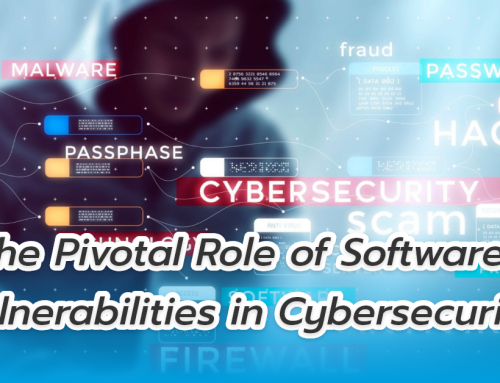Ensuring Data Security within ERP Systems
Enterprise Resource Planning (ERP) systems are vital for integrating various business processes and managing extensive amounts of sensitive data. Given the critical nature of this information, ensuring data security within ERP systems is paramount. This article outlines key strategies and best practices for securing data within ERP systems.
Understanding Data Security Risks
Before diving into specific security measures, it is essential to understand the primary data security risks associated with ERP systems
- Data Breaches Unauthorized access to sensitive information can result in significant financial and reputational damage.
- Insider Threats Employees or contractors with access to the ERP system can intentionally or unintentionally compromise data security.
- Data Loss Accidental deletion or corruption of data can disrupt business operations.
- Regulatory Non-Compliance Failure to comply with data protection regulations can lead to legal penalties and loss of customer trust.
Best Practices for Data Security in ERP Systems
- Data Encryption
Encryption is a fundamental technique for protecting data
- Data at Rest Encrypt sensitive data stored within the ERP system to protect it from unauthorized access, even if physical security is compromised.
- Data in Transit Use encryption protocols such as TLS/SSL to secure data during transmission between the ERP system and other systems or user devices.
- Access Control
Implementing strict access control measures ensures that only authorized personnel can access sensitive data
- Role-Based Access Control (RBAC) Assign permissions based on user roles to ensure that users only access data necessary for their job functions.
- Principle of Least Privilege Grant users the minimum level of access required to perform their tasks, reducing the risk of data misuse.
- Multi-Factor Authentication (MFA)
Enhance login security with MFA
- Two-Factor Authentication (2FA) Require users to provide two forms of verification before accessing the ERP system, making it more difficult for unauthorized users to gain access.
- Biometric Authentication Consider incorporating biometric authentication methods such as fingerprint or facial recognition for additional security.
- Regular Audits and Monitoring
Continuous monitoring and regular audits help detect and address security issues promptly
- Activity Logs Maintain detailed logs of user activities, access attempts, and system changes. These logs can be critical for identifying and investigating suspicious activities.
- Security Audits Conduct regular security audits to assess the effectiveness of existing security measures and identify potential vulnerabilities.
- Data Backup and Recovery
Implement robust data backup and recovery procedures to protect against data loss
- Regular Backups Schedule regular backups of critical data and ensure that backup copies are stored securely.
- Disaster Recovery Plan Develop and test a disaster recovery plan to ensure that data can be quickly restored in the event of loss or corruption.
- User Training and Awareness
Educate users about data security best practices
- Security Training Provide regular training sessions to help users recognize and avoid common security threats such as phishing attacks and social engineering.
- Clear Policies Develop and enforce data security policies that outline acceptable use, data handling procedures, and incident reporting protocols.
- Compliance with Data Protection Regulations
Ensure compliance with relevant data protection regulations to avoid legal penalties and enhance customer trust
- GDPR, HIPAA, etc. Stay informed about industry-specific regulations and implement necessary measures to comply with them.
- Data Protection Officer (DPO) Appoint a DPO to oversee data protection efforts and ensure regulatory compliance.
- Third-Party Vendor Management
Many ERP systems integrate with third-party applications and services, which can introduce additional security risks
- Vendor Assessment Conduct thorough security assessments of third-party vendors before integration.
- Contractual Agreements Include data security requirements in vendor contracts to ensure that third-party providers adhere to your organization’s security standards.
Advanced Security Technologies
In addition to these foundational practices, consider leveraging advanced security technologies to further enhance data security
- Intrusion Detection and Prevention Systems (IDPS) Deploy IDPS to detect and prevent unauthorized access and malicious activities within the ERP system.
- Behavioral Analytics Use behavioral analytics to identify unusual patterns of user behavior that may indicate a security threat.
- Artificial Intelligence (AI) and Machine Learning (ML) Implement AI and ML technologies to analyze large volumes of data and detect anomalies that could signal security breaches.
Conclusion
Securing data within ERP systems requires a comprehensive approach that combines strong encryption, access control, regular monitoring, and user education. By following these best practices and leveraging advanced security technologies, organizations can protect their sensitive data from breaches, ensure compliance with regulations, and maintain the integrity and reliability of their ERP systems. Investing in data security not only safeguards critical business information but also enhances overall organizational resilience and trust.
For those of you who want to make an E-Commerce app, a shopping app or a Delivery app, we recommend SC-Spark Solution, an app making company. experienced With direct experience from Silicon Valley, being a company that develops more than 100 applications around the world, both custom and ready-made for you to choose from. If anyone is interested in making mobile applications or websites, you can contact here
Contact us at
Facebook : SC-Spark Solution บริการทำแอปพลิเคชั่น
“Nothing is impossible”







